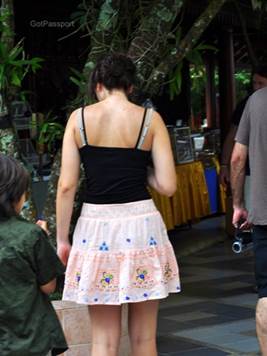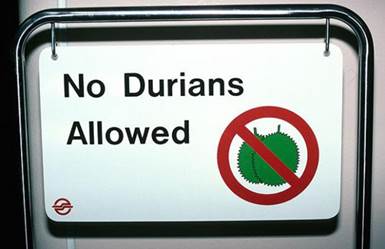Module 11: Tourism in ASEAN
Table of Contents
Reading Text & Presentation
11.2 Visiting nationalities to Asia
11.2.1 Cultural distinctions among Asian tourists (some samples)
Top most visiting nationalities
Data from Department of Tourism, Ministry of Tourism and Sports
Rank |
Country or territory |
2013 |
2012 |
2011 |
2010 |
2009 |
2008 |
2007 |
2006 |
* |
ASEAN |
7,396,297 |
6,253,480 |
5,594,577 |
4,534,235 |
3,968,579 |
3,971,429 |
3,520,051 |
3,389,342 |
| 1 | 4,705,173 | 2,789,345 | 1,721,247 | 1,122,219 | 777,508 | 826,660 | 907,117 | 949,117 |
(Source: http://en.wikipedia.org/wiki/Tourism_in_Thailand retrieved 4/2/2014)
At the moment, there are a lot of new visitors who come to Thailand. These include both Asian travelers, like Chinese, and non-Asian travelers like Russian visitors. As can be seen from the statistics of top most visiting nationalities above, Chinese tourists have increasingly become the top most visiting nationality to Thailand.
A summary on the research from the TAT about the situation of tourism shows an increasing number of Russian and Chinese tourists in Thailand. Some problems with the Chinese and Russian markets, opinions towards them, and guidelines for solving the problems are briefly presented below.
Chinese tourists
In 2011, 1.7 million Chinese visitors traveled to Thailand and this figure was expected to rise to 2 million in 2012. The Thai-Chinese Tourism Alliance Association declared in February 2013 that Chinese tourists were the main supplier of Thailand's tourism industry and 3.3 million Chinese tourists were expected in 2013. The Association also calculated that the average Chinese tourist remains in the country for one week and spends from 30,000 to 40,000 Thai baht (US$1,000 to US$1,300) per person, per trip. According to Thailand’s Tourism Authority, the number of Chinese tourists rose by 93 percent in the first quarter of 2013, an increase that was attributed to the popularity of the Chinese film Lost in Thailand that was filmed in the northern province of Chiang Mai. Chinese media outlets have claimed that Thailand superseded Hong Kong as the top destination for Chinese travellers during the 2013 May Day holiday.
Russian tourists
Over two decades after the death of Soviet communism, things have changed. Russians now travel everywhere: the top four destinations are Turkey, China, Egypt and Finland. Exotic destinations are proving popular, too: Thailand, Vietnam, Brazil, Guadeloupe, Cambodia and even the Galapagos Islands. In 1995, 2.6 million Russians went on holiday outside the former Soviet Union; by 2006 the figure had trebled, to 7.7 million.
Thailand is one of the major tropical destination points for tourists from Russia. However, numbers provided by regional Thai authorities are contested by Russians as artificially inflated, and Thai authorities contest Russian numbers as too small:
- Russian border guards reported 259 thousand departures to Thailand in 2008 (235 thousand in 2007). Turkey, the most common destination, accounts for 2.2 million departures. Thai government sources noted that Russian numbers include only direct flights, leaving out tourists who fly with stopovers elsewhere, and reported 279 thousand Russian tourists for 2007.
- Thai tourist service reported 456,972 Russian "tourist visits" to Pattaya alone in January–March 2007 (of a total of 1.57 million). Russian commentators note that Thais actually counted hotel nights and their number should be divided by a factor of 10 to 11. (http://en.wikipedia.org/wiki/Russia%E2%80%93Thailand_relations)
Each tourist stereotype is different. For example, many would say that the American tourist is loud, overweight, and doesn’t speak any language other than English. The Japanese tourist may be loaded with the latest models of the most expensive photographic equipment to take pictures everywhere. For the Chinese and Russian tourists, the TAT survey reported that there are many problems arising from an increase in Chinese tourists. For example, they are loud, dirty, cannot communicate, etc. As for the Russian tourists, several problems reported are prostitution among the Russian women, some never say ‘sorry’, some are mafia types who come into Thailand for illegal business, some are not able to communicate, do not dress appropriately etc.
(Source: http://www.kyivpost.com/opinion/op-ed/why-do-russian-tourists-behave-so-badly-abroad-35354.html retrieved 4/2/2014)
Muslim tourists
It is reported that several Asian countries capture big revenues from Muslim tourists. Accordingly, a new policy to attract the Muslim tourists at Japan’s Kansai international airport is that they have recently certified one of their noodle restaurants as “halal”. This is a part of a larger effort throughout Asian countries to establish the new Muslim markets in the region.
(Source: http://home-care-fix.blogspot.com/2013/09/asian-countries-capture-big-revenues.html retrieved 4/2/2014)
As Thailand is one of the major destinations for Muslim tourists around the world, the country has been receiving a larger number of Muslim tourists from ASEAN countries such as Malaysia, Singapore and Indonesia. Thailand has also started offering specific halal services to Muslim tourists. For the tourists from Muslim countries in the Middle East such as the UAE, the Tourism Authority of Thailand is promoting halal spas for Muslim tourists who require strict privacy for male and female clients. Moreover, crescent rating’s study ranked Bangkok’s Suvarnnabhumi Airport the most Islam-friendly airport in a non-Muslim country.
(Source: http://thehalalchoice.com/h/index.php/8-main/23-top-8-destinations-for-muslim-tourists retrieved 4/2/2014)
11.2.2 Tips for etiquette at Buddhist temples and Muslim mosques
In order to lessen or prevent problems from an increase of tourists from a variety of countries who visit Thailand, some of the following Buddhist temple or Muslim mosque etiquettes are recommended:
- Take your shoes off when offering food to the monks.
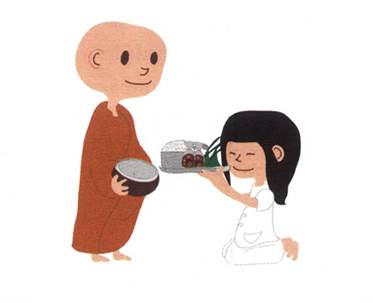
|
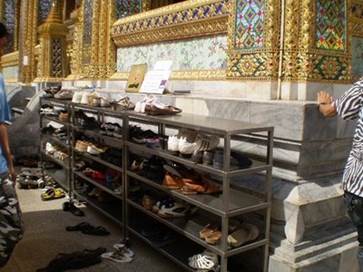 |
|
|
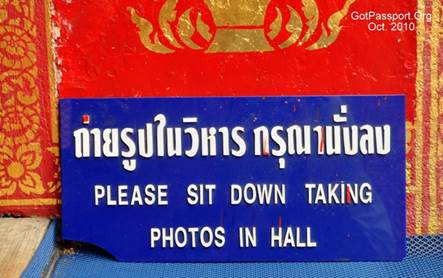 |
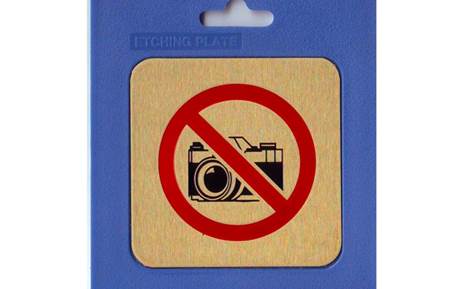 |
|
|
Although some strong-smelling fruits like durian are allowed in temples or mosques, tourists should not take them on air-conditioned buses. Durian is not allowed in some areas or hotels that show the following sign:
|
|
- In Singapore, the punishment for drug offenders is as strict as a life sentence, and littering or spitting in public will be fined. Chewing gum is against the law, and bubble gum and chewing gum are not allowed to be sold in the country. Forgetting to flush the toilet could get you a fine of $500. If you're a gay man and discovered kissing another man you could end up receiving a jail sentence, and don't forget people are still caned in Singapore for some crimes, including that really serious one of chewing gum.
(Source: http://voices.yahoo.com/five-reasons-not-travel-singapore-south-6691622.html retrieved 22/3/2014)
Language Focus 11.2
Activities
Activity 6Activity 7Activity 8
